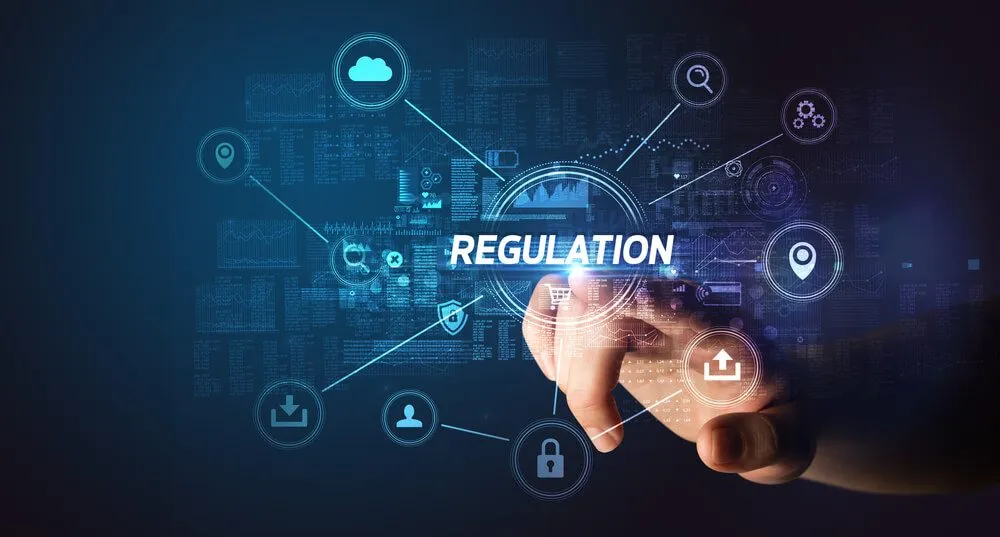Cybersecurity Regulations and Compliance: What You Need to Know
In an era dominated by digital interconnectedness, the imperative to fortify cybersecurity measures has never been more pronounced. As businesses and individuals continue to rely extensively on digital platforms, the risk of cyber threats looms large. Recognizing this, governments and regulatory bodies worldwide have introduced stringent cybersecurity regulations to safeguard sensitive information and mitigate the escalating risk of cyberattacks.

The Role of Cybersecurity Regulations
Cybersecurity regulations serve as a vital framework for organizations, outlining specific requirements and standards to uphold in the face of evolving cyber threats. These regulations are designed to create a unified approach to cybersecurity, ensuring a baseline of protection across industries. As the threat landscape continues to evolve, compliance with these regulations becomes paramount for organizations seeking to safeguard sensitive data and maintain the trust of their stakeholders.
Key Components of Cybersecurity Regulations
One of the key components of cybersecurity regulations revolves around data protection. Organizations are mandated to implement measures such as data encryption, secure storage practices, and controlled access to confidential information. This ensures that even if a breach occurs, the potential damage is mitigated by the robust protection of sensitive data.
Incident response plans are another critical facet of cybersecurity regulations. Organizations must develop and implement comprehensive plans to respond swiftly and effectively to a cyberattack. These plans not only help in minimizing the impact of an incident but also facilitate a quicker recovery process, ensuring business continuity.
Regular audits and assessments are integral to maintaining cybersecurity compliance. Organizations are required to conduct periodic evaluations of their cybersecurity measures, identifying vulnerabilities and ensuring that their security protocols remain effective over time. This continuous monitoring approach is crucial in an environment where cyber threats are constantly evolving.
Achieving Cybersecurity Compliance
While cybersecurity regulations provide a comprehensive framework, achieving and maintaining compliance requires a strategic and ongoing commitment from organizations. Employee awareness is a foundational element of cybersecurity compliance. Training programs should be implemented to educate staff about potential threats, secure practices, and the importance of adhering to organizational cybersecurity policies.
Conducting a thorough risk assessment is another crucial step toward cybersecurity compliance. Organizations need to evaluate their digital landscape, understand the types of data they handle, and assess the potential impact of a security breach. This risk-based approach allows organizations to prioritize their cybersecurity efforts and allocate resources effectively.
Technology integration is fundamental to achieving and maintaining compliance. Implementing the right cybersecurity technologies, such as firewalls, antivirus software, intrusion detection systems, and encryption tools, is essential. Regular updates and patches are crucial to address emerging threats and ensure that the organization’s defense mechanisms remain robust.
Navigating the Global Landscape
On the global stage, cybersecurity regulations are not confined to specific regions; they have become a global imperative. Various countries have enacted their legislation to address the unique challenges posed by cyber threats. Organizations operating internationally must navigate a complex web of regulations, understanding and adhering to the specific requirements of each jurisdiction in which they operate.
Despite the global nature of these regulations, challenges persist. The fragmentation of regulations across different regions can pose difficulties for organizations, requiring a holistic approach to compliance. Implementing automated monitoring tools can streamline the continuous monitoring process, enhancing an organization’s ability to detect and respond to potential breaches in real-time.
Conclusion: Safeguarding the Digital Future
In conclusion, as technology continues to advance, so too do the threats that organizations face in the digital landscape. By understanding and embracing cybersecurity regulations and committing to ongoing cybersecurity compliance, businesses can fortify their defenses against evolving cyber threats. The proactive adoption of these measures not only protects sensitive data but also instills trust among stakeholders, ultimately contributing to the resilience and longevity of the digital economy.







Hindi Movies
For the reason that the admin of this site is working, no uncertainty very quickly it will be renowned, due to its quality contents. moviesbox.net